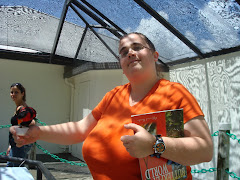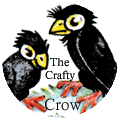3.) Octopus are part of the Mollusc family, more closely related to Pipis and Mussel than fish.
4.)The octopus is the ultimate impersonator. An octopus can change color, make itself smooth, or sprout spikes. Some use the changes for camouflage—perfectly matching and blending into their surroundings. Others put all the right bits together and take on the forms and colors of different species of fish.
5.) Baby octopuses never know their parents. They emerge from their eggs smaller than a pea and have to survive by their wits and powers from the start. Some head off to explore the world, drifting in ocean currents. They are mainly see-through but can already change color, squirt ink, and regrow lost body parts.
6.) The mother octopus goes into a dark cave and lays up to 100,000 eggs. Each egg has a string attached to it. She ties all the eggs together and hangs up the entire bunch from the ceiling. She keeps guard over them day and night and does not go out of her den. She starves herself and dies probably even before the eggs are hatched.
7.) Squid swim faster than any other invertebrate.
8.) Some squid have bioluminescent organs that make them glow in the dark.
9.) Giant squid have eyes the size of basketballs.
10.) Scientists estimate there are about 500 species of squid, with the smallest only two centimetres long.
(Comb Jellies)
1.) Deep sea creatures are fish and other creatures that live down in the deepest part of the ocean. It is very cold down at the bottom and there is no sunlight only the light produced by the some of the creatures. Almost every deep sea creature has a cell in their body that makes a light. However scientist have discovered more about this light making process by studying fireflies.
2.) The Giant Squid is one of the very few deep ocean creatures that can visit the ocean surface.
3.) The apple anemone is one of the largest anemones found in the deep sea.The apple anemone has a broad column or base. But it's not immobile as are most anemones. When threatened, it elongates and sways from side to side to detach itself from the bottom. It then "swims" away by rapidly flexing or bending its column or by thrashing its tentacles.
4.) The "fishing rod" growing from the female anglerfish's snout ends in a glowing blob of light. At the tip of this modified fin ray, is a small organ (esca) that contains millions of light-producing bacteria.
5.) Scientists believe the bloodybelly's red belly helps mask bioluminescent light from the prey it swallows. A predator with a glowing gut could easily become prey.
6.) Midwater Shrimp's long antennae—nearly four times its body length—may help it find food or mates by sensing chemicals produced by other animals.
7.) Predatory tunicates are simultaneous hermaphrodites—each animal produces both eggs and sperm. If conditions are poor or there are no other tunicates nearby, each tunicate can reproduce by itself.
8.) Symbiotic clam may take up to 100 years to reach maturity.
9.) When disturbed, sea whips glow with a bright, bioluminescent light.
10.) Japanese Spider Crab is the largest known arthropod; fully grown it can reach a leg span of almost 4 m (13 ft), a body size of up to 37 cm (15 inches) and a weight of up to 20 kg (44 lb).
I hope that everyone joins us for next week. We plan on doing Penguins and Polar Bears. If you have any facts that you would like to share please leave a comment and I would be happy to post it on our next list.







































4 comments:
Well thats more then I ever knew about sea creatures! What a great study!
Hey are you still going to join us on the diet blog? We miss you!
Very cool..P loves Giant Squids and Octopi...The Zoomlians did some cool stuff with Giant Squids a while ago..that's why I made her blog..so we could "see" it!
I am having computer issues, so I may not update anytime soon.:-(
Hey- did you guys watch the Discovery channels show on the Giant Squid this weekend..I wanted to call you and say..put it on now!!
P was freaking out and glued to the screen.
I loved reading your animal facts! We are also learning about animals this year! I hope my slow dial up will keep loading your blog so we can follow along! I can't tell you how excited I was when I finally got your blog loaded on my computer!
Post a Comment